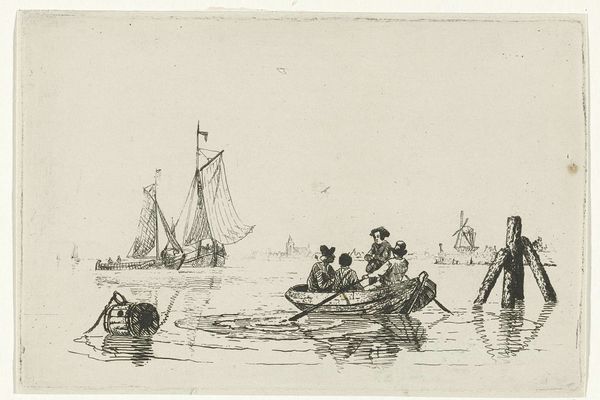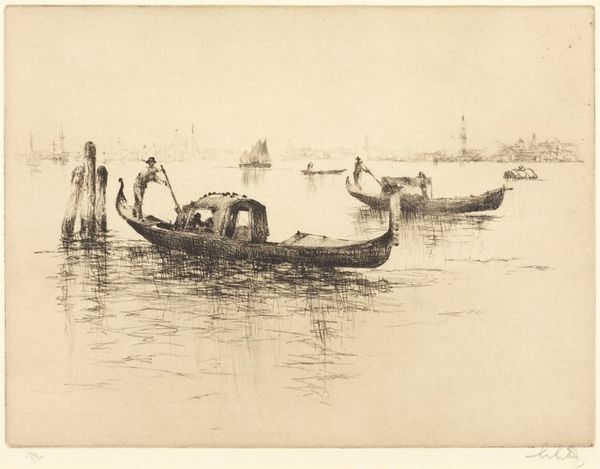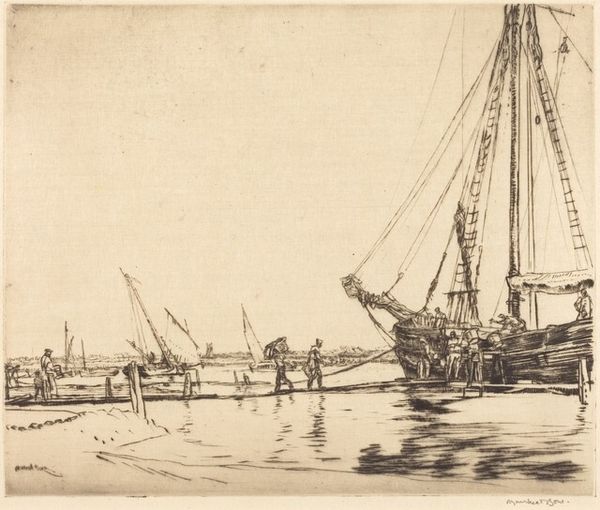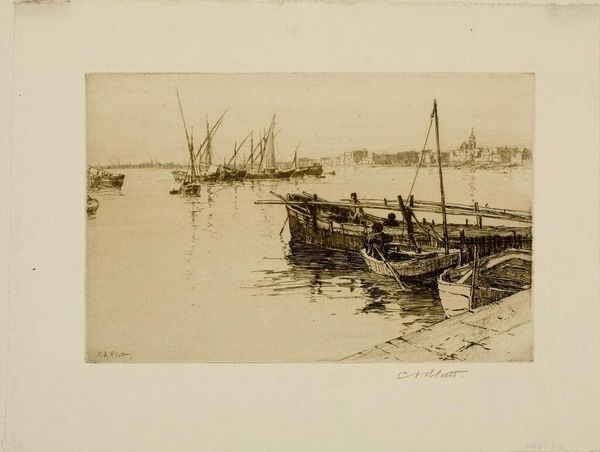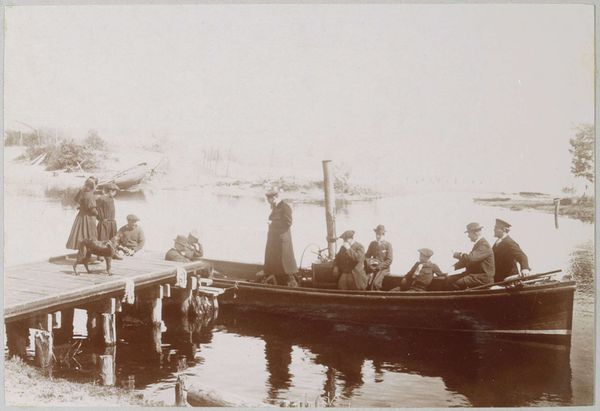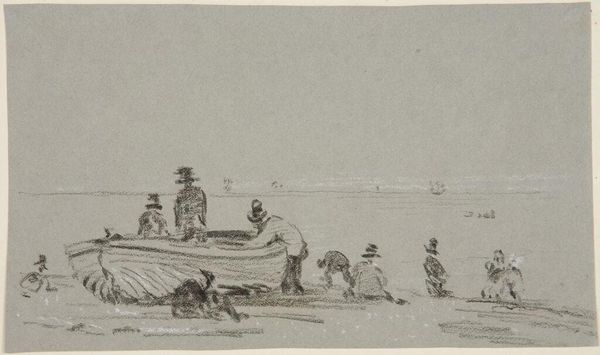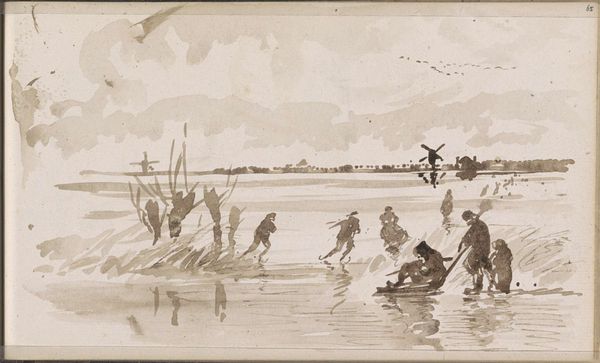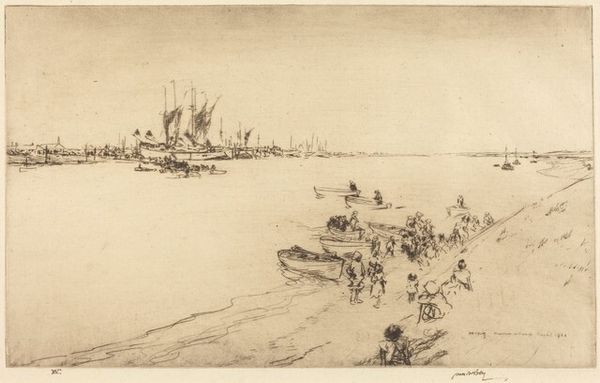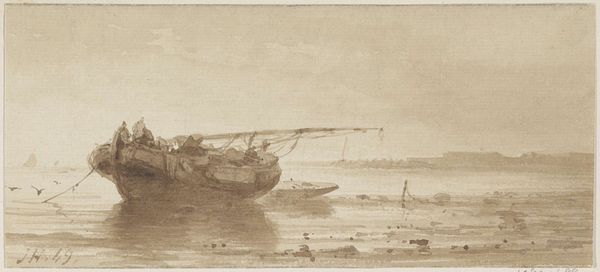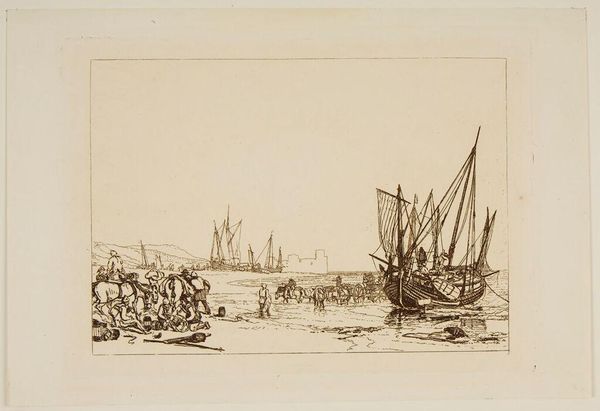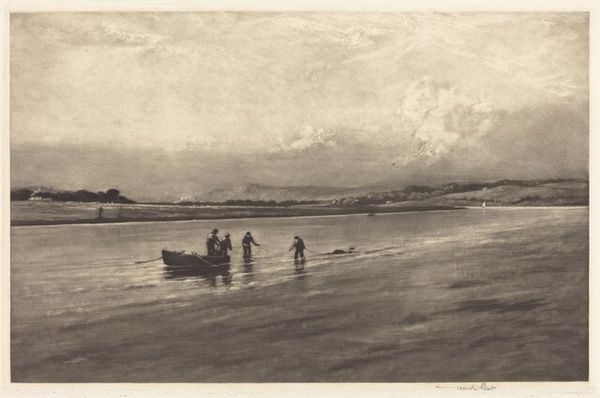
print, etching
# print
#
etching
#
landscape
#
cityscape
#
realism
Copyright: National Gallery of Art: CC0 1.0
Curator: Here we have Arthur Briscoe’s "Brightlingsea Hard," an etching from 1929. It’s a fascinating glimpse into a coastal community. Editor: It evokes a feeling of stark, windswept isolation. The composition really pushes all the visual weight down into the lower half, leaving an empty sky, which emphasizes a feeling of quiet desperation. Curator: Absolutely. The hard, or the landing place, is depicted with remarkable realism, and these figures almost seem to be part of the landscape itself. Etchings were popular in the early 20th century as they reflected an honest portrayal of the social life and labor of people in places such as this. Note how the boat itself is weighed down with figures and their labor. It’s evocative of Charon's boat in mythology. Editor: Yes, that weighted-down feeling comes across so strongly! Structurally, the repeating horizontals of the shore, the boats, and the distant horizon contribute to that sense of stillness and heavy permanence. Yet there is still life implied by the mirrored reflections on the water’s surface. Curator: I see it as a powerful symbol of community resilience and struggle. The men seem like shadows; you can’t make out individual figures clearly, indicating how a life of such labor almost takes away one’s personality to become part of the collective experience. This adds an important layer to our modern understanding of class and the universal connection between people and labor. Editor: Interesting interpretation. For me, the lack of distinctive faces simply emphasizes the tonal values—how the light interacts with forms to create depth. The horses in the background feel slightly out of scale; is it a technical issue with perspective or intended to draw them deeper into memory and dreamscape? Curator: Possibly. Or perhaps those are not horses in the background at all, just wishful illusions or hallucinations caused by exhaustion and hunger, adding a symbolic undertone to this portrait. It feels as if a psychological state has been expressed on paper. Editor: Looking again, it's definitely less about simple mimesis and more of an atmospheric study. The cross-hatching used is economical yet effective and the balance between darkness and light lends the scene that somber weightiness we picked up on. Curator: Right, seeing those elements together tells a powerful story, connecting us to the experiences and enduring spirit of those who lived and worked there. Editor: It does leave a long echo, doesn’t it?
Comments
No comments
Be the first to comment and join the conversation on the ultimate creative platform.

